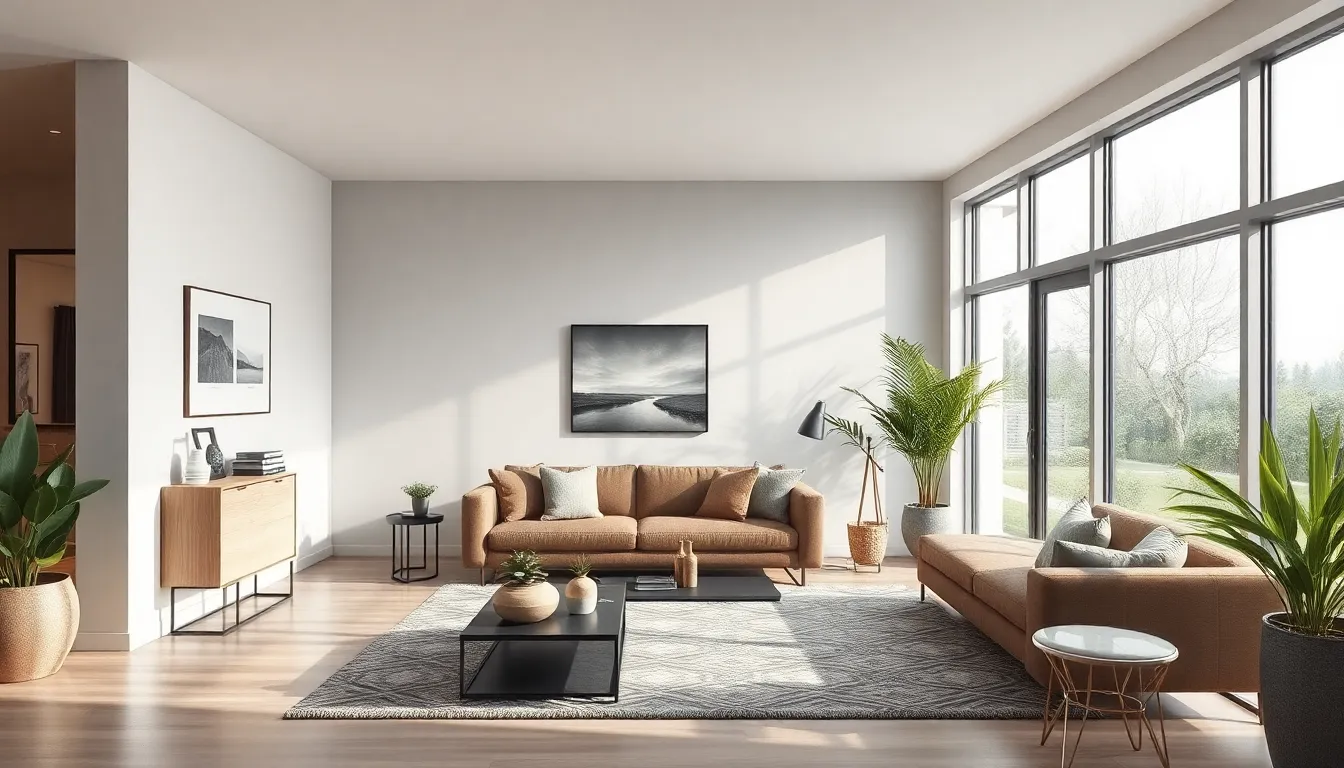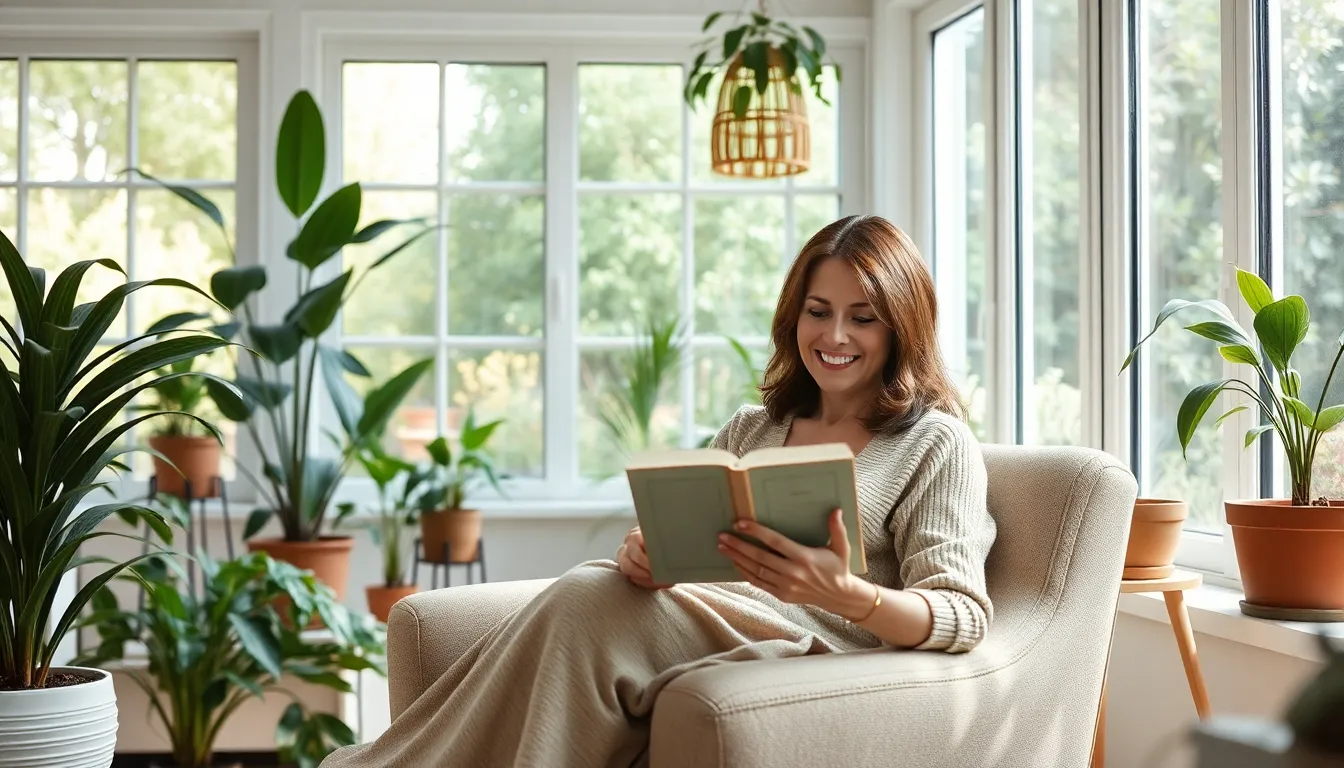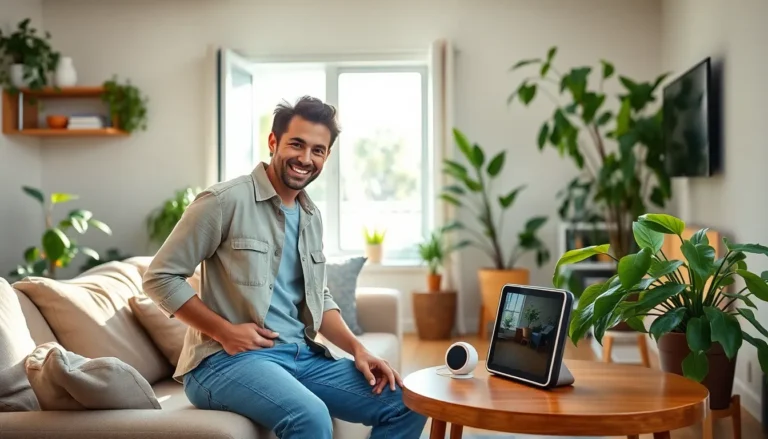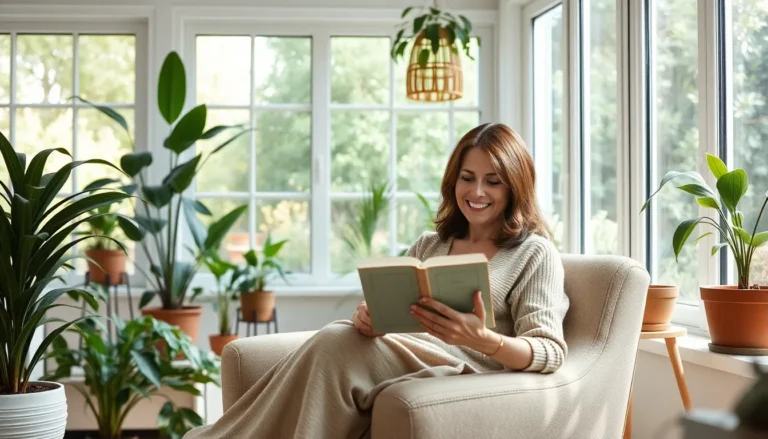Ever felt like your home is playing a game of Tetris, with every piece fitting just a little too snugly? Room extensions might just be the cheat code you need to level up your living space. Whether it’s for that long-awaited home office or a cozy reading nook, adding extra square footage can transform your home from cramped to cozy in no time.
Imagine sipping coffee in your newly extended sunlit room, while your friends wonder how you suddenly became the envy of the neighborhood. Room extensions not only boost your home’s value but also give you the freedom to stretch out and breathe. So why not take the plunge? Let’s explore how a little extra space can lead to a whole lot of happiness.
Table of Contents
ToggleOverview of Room Extension
Room extensions serve as an effective way to optimize living spaces. They provide additional square footage that can be utilized for various purposes, transforming a home’s layout significantly. Adding an office space is one option that enhances productivity. Alternatively, a cozy reading nook can create a serene retreat within the house.
Investing in a room extension leads to more than just improved functionality; it increases property value substantially. According to the National Association of Realtors, home extensions can add between 10% to 20% to a home’s market value, depending on the size and quality of the work.
Creating a unified living environment becomes more achievable through extensions. Spaces can blend seamlessly, allowing for better flow and more natural light. Families often find that additional rooms can accommodate growing needs, making day-to-day life more comfortable.
Design possibilities abound with room extensions. Homeowners can choose between various styles, including sunrooms, bump-outs, or second-story additions. Each option brings unique benefits, appealing to diverse personal preferences and aesthetic goals.
Planning a room extension requires careful consideration of local building regulations. Understanding zoning laws and obtaining permits ensures compliance and avoids potential issues during construction. Engaging with licensed contractors can streamline this process and provide expert guidance on design and execution.
Overall, room extensions represent a practical solution for maximizing space and enhancing quality of life at home. They foster an environment that accommodates the evolving needs of its residents.
Benefits of Room Extension

Room extensions offer several advantages that significantly enhance living environments. These enhancements improve overall comfort and functionality in a home.
Increased Space
Increased space provides homeowners with opportunities to create functional areas. Extensions allow for dedicated spaces such as home offices, playrooms, or guest bedrooms. More square footage accommodates growing families or evolving lifestyles. Comfort improves because additional room reduces clutter and promotes organization. Expanding a home results in more options for design and decor, catering to personal preferences. Greater flexibility in room use enables an optimal fit for activities, family gatherings, or quiet escapes.
Improved Property Value
Improved property value stands as one of the most compelling benefits of room extensions. Data from the National Association of Realtors indicates that extensions can raise property values by 10% to 20%. Enhancements make homes more appealing to potential buyers and offer greater market resilience. Additionally, increased square footage attracts a wider range of buyers, enhancing competitive advantage in real estate. Renovating expands not only living space but also investment potential, making it a wise choice for homeowners. Overall, greater value provides financial benefits alongside lifestyle improvements.
Types of Room Extensions
Room extensions come in various styles, each suited to different needs and preferences. Homeowners often choose extensions based on their desired functionality and architectural aesthetics.
Single-Story Extensions
Single-story extensions expand a home’s footprint without altering its height. These additions often include features like sunrooms, family rooms, or dining areas. Single-story extensions are ideal for maximizing outdoor views while seamlessly connecting indoor and outdoor spaces. They typically require less structural work than multi-story options. Design flexibility allows for personalized touches that enhance curb appeal. Functionality increases significantly, as this type of extension generally incorporates features like large windows.
Multi-Story Extensions
Multi-story extensions provide an opportunity to add substantial space while maintaining existing yard areas. These expansions work best for homes that require additional bedrooms or dedicated office spaces. A second floor can significantly enhance property value by providing premium living areas. Multi-story designs include various configurations, from full second stories to loft-style options, allowing for creative layouts. They typically integrate features like balconies or roof terraces, improving outdoor enjoyment. Local building regulations often influence design, emphasizing the importance of detailed planning.
Planning and Regulations
Understanding planning and regulations is crucial for successful room extensions. Homeowners must navigate local laws and requirements to ensure compliance.
Obtaining Permits
Securing permits is essential for any room extension project. Specific local authorities grant these permits based on zoning regulations and building codes. Homeowners should check with their city or county about the necessary documentation. Failing to obtain proper permits can lead to fines or complications during construction. Engaging a licensed contractor can simplify this process as they often handle permits for their clients. Being informed about permit requirements fosters a smooth and efficient building experience.
Design Considerations
Design choices significantly impact the functionality and aesthetics of room extensions. Homeowners must consider how the new space integrates with the existing structure. Choosing open-plan designs can enhance natural light flow and create a spacious feel. Selecting materials that complement the current home style ensures visual coherence. Accessibility features, like wider doorways and lower counters, matter for ease of movement. Ultimately, thoughtful design considerations lead to a harmonious living environment that meets specific needs.
Costs Involved
Room extensions incur various costs that homeowners must consider. On average, single-story extensions range from $80 to $200 per square foot, while multi-story extensions can cost between $150 and $300 per square foot. These figures depend on location, materials, and design complexity.
Labor costs significantly contribute to total expenses. Skilled labor rates vary by region, with average hourly wages for contractors ranging from $40 to $100. Engaging a licensed contractor simplifies the process and often enhances the outcome, but it comes at a price.
Permits and inspections can add another layer of expenses. Local authorities typically charge permit fees based on project size and complexity, averaging between $100 and $2,000. Homeowners should budget for these costs as they are essential for compliance with zoning regulations and building codes.
Materials and finishes also affect the overall budget. High-quality materials may increase initial investment but can lead to improved aesthetics and longevity. On average, homeowners spend an additional 20% to 30% on finishes and fixtures when constructing an extension.
Finally, consider additional expenses such as landscaping, utilities, and inspections. Landscaping needs may arise to create a cohesive appearance and improve curb appeal. Utility upgrades, such as electrical or plumbing adjustments, might be necessary and can add several thousand dollars to the total.
Understanding these costs provides a clearer picture of the financial commitment involved in room extensions. Homeowners benefit from careful budgeting and detailed planning to ensure successful project completion.
Room extensions offer a practical solution for homeowners seeking to enhance their living spaces. By providing additional square footage, they create opportunities for increased comfort and functionality. Not only do these extensions elevate the quality of life at home, but they also significantly boost property value.
With various design options available, homeowners can tailor extensions to fit their unique needs and aesthetic preferences. Navigating the planning process may seem daunting, but engaging experienced professionals can simplify the journey. Ultimately, investing in a room extension can transform a home into a more enjoyable and valuable space, making it a worthwhile consideration for anyone looking to improve their living environment.




